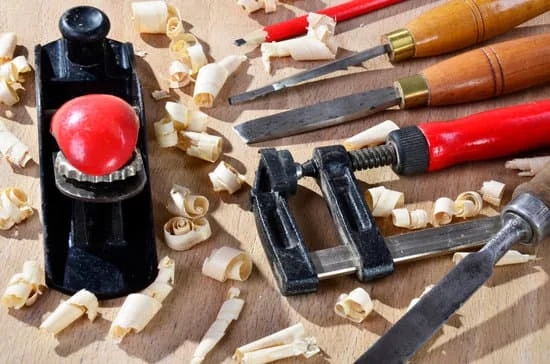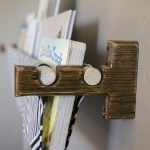A vice is an essential tool for any woodworking project, providing the necessary stability and grip to hold pieces securely in place. Whether you’re a novice or experienced woodworker, having the right vice can make all the difference in the outcome of your creations. From cutting to sanding to chiseling, a reliable vice is crucial to ensure precision and safety in your workshop.
When it comes to woodworking vices, there are various types available on the market, each serving different purposes and offering unique features. Understanding the differences between them can help you choose the right vice for your specific needs and projects. From bench vices to quick-release vices, woodworkers have a range of options to consider based on their work requirements and preferences.
Choosing the perfect woodworking vice for your workshop involves considering factors such as size, material, durability, and ease of use. Whether you prioritize versatility or strength in a vice, selecting one that fits seamlessly into your workspace will enhance both the efficiency and quality of your woodworking projects. In this article, we will explore the importance of a vice in woodworking and provide insights on selecting, installing, maintaining, and utilizing this indispensable tool effectively.
Types of Vices Available for Woodworking Projects
When it comes to woodworking, having the right tools is essential for a successful project. One of the most important tools in any woodworker’s arsenal is a vice. A vice is a mechanical screw apparatus used to secure an object in place, typically wood, allowing for easier and more precise work.
Vices come in various types and styles, each designed for specific purposes and applications. Understanding the different types of vices available for woodworking projects can help you choose the right one for your workshop.
One common type of vice used in woodworking is the bench vise. Bench vises are mounted directly onto a workbench or table, providing a stable and secure platform for holding materials during cutting, drilling, sanding, or other tasks. These vices often have adjustable jaws that can be tightened or loosened to accommodate different sizes of workpieces. Bench vises are versatile and suitable for a wide range of woodworking projects.
Another popular type of vice used in woodworking is the quick-release vise. Quick-release vises feature a mechanism that allows for rapid opening and closing of the jaws without needing to turn the handle multiple times. This type of vice is ideal for quickly securing or releasing workpieces with ease and efficiency.
Quick-release vises are favored by many woodworkers for their convenience and time-saving benefits when working on multiple projects simultaneously. Choosing the right type of vice ultimately depends on your specific needs and preferences as a woodworker.
How to Choose the Right Vice for Your Workshop
When selecting a vice for woodworking, there are several factors to consider to ensure that you choose the right one for your workshop. One of the first things to think about is the type of projects you typically work on.
If you primarily deal with small or delicate pieces of wood, a light-duty vice may be sufficient. However, if you frequently handle large and heavy materials, opting for a heavy-duty vice is essential to provide the necessary support and stability.
Another crucial aspect to keep in mind when choosing a woodworking vice is the material it is made of. Vices come in various materials such as cast iron, steel, and aluminum. Cast iron vices are known for their durability and strength, making them ideal for long-term use in high-demanding woodworking tasks. On the other hand, steel vices are lighter in weight but still robust enough to withstand substantial pressure during woodworking projects.
Furthermore, consider the features and capabilities that would best suit your needs when selecting a vice for woodworking. Some vices come with additional functions like quick-release mechanisms, swivel bases, or adjustable jaws that can enhance your work efficiency and precision. Evaluating these aspects can help you narrow down your options and find the perfect woodworking vice that meets all your requirements.
| Factors | Considerations |
|---|---|
| Type of Projects | Small or delicate pieces vs. large and heavy materials |
| Material | Cast iron vs. steel vs. aluminum |
| Features | Quick-release mechanisms, swivel bases, adjustable jaws |
Step-by-Step Guide on Installing and Setting Up a Vice
A crucial component of any woodworking workshop is a sturdy and reliable vice. A woodworking vice provides the necessary stability and grip to hold pieces of wood securely in place during various woodworking tasks. Understanding how to properly install and set up a vice is essential for ensuring its functionality and longevity in your workspace.
Step 1: Choosing the Right Location
Before installing your woodworking vice, it’s important to select the optimal location for it within your workshop. Consider factors such as height, accessibility, and clearance around the vice to ensure ease of use. Additionally, make sure that the mounting surface is strong enough to support the weight and pressure that will be exerted on the vice during use.
Step 2: Mounting the Vice
To install the woodworking vice, begin by securing it to a workbench or other suitable surface using appropriate fasteners. Make sure to position the vice so that the jaws are parallel to the edge of your workbench for maximum functionality. Use a level to ensure that the vice is installed straight and securely.
Step 3: Setting Up the Vice
Once the woodworking vice is securely mounted, adjust the jaws to accommodate different sizes of wood pieces. Use a wrench or key provided with your vice to tighten or loosen the mechanism as needed. Test the alignment and clamping power of the vice by placing a piece of scrap wood between the jaws and tightening them to ensure a secure grip.
By following these step-by-step instructions for installing and setting up your woodworking vice, you can ensure that it functions effectively in your workshop. Proper installation and setup are essential for maximizing the utility of your vice and enhancing your overall woodworking experience. Remember that regular maintenance and care will also help prolong the life of your woodworking vice and keep it in peak condition for future projects.
Tips and Tricks for Using a Vice Effectively in Woodworking
When it comes to woodworking, having a reliable vice is essential for effectively holding workpieces in place while you saw, chisel, or plane. Here are some tips and tricks for using a vice effectively in your woodworking projects:
- Positioning: When using a vice, make sure to position it at a comfortable height that allows you to work on your project without straining your back or arms. Adjust the jaws of the vice to securely hold your workpiece in place without over-tightening it.
- Protecting Your Workpiece: To prevent damage to your workpiece, consider using soft jaw pads or scraps of wood between the jaws of the vice and your project. This will help distribute pressure evenly and prevent denting or marring the surface of your wood.
- Using Auxiliary Tools: Sometimes, you may encounter a workpiece that is too small to be held securely in the vice. In such cases, consider using auxiliary tools like bench dogs, holdfasts, or clamps to provide additional support and stability.
Additionally, always remember to clean and lubricate your vice regularly to ensure smooth operation and longevity. By following these tips and tricks, you can enhance your woodworking experience and achieve more precise results with the help of a reliable vice for woodworking.
Common Mistakes to Avoid When Using a Vice
When it comes to woodworking, using a vice properly is essential to ensure safety, accuracy, and efficiency in your projects. While vices are valuable tools in the workshop, there are common mistakes that woodworkers often make when using them. By being aware of these pitfalls and taking measures to avoid them, you can make the most out of your vice for woodworking.
Not Securing the Workpiece Properly
One common mistake that woodworkers make when using a vice is not securing the workpiece properly. Failing to clamp down the piece tightly can result in it slipping or moving while you’re working on it. This can lead to inaccuracies in your cuts or even potential injuries. Ensure that the workpiece is securely held in place before starting any woodworking task.
Over-Tightening the Vice
Another mistake to avoid is over-tightening the vice. While it’s important to secure the workpiece firmly, applying too much pressure can damage both the vice and the workpiece. Over-tightening can also cause strain on the screw mechanism of the vice, leading to premature wear and tear. Always use just enough pressure to hold the workpiece securely without exerting excessive force.
Ignoring Proper Maintenance
Neglecting proper maintenance of your woodworking vice is another common mistake that many woodworkers make. Regular cleaning and lubrication of the moving parts are essential to keep the vice functioning smoothly and prevent rust or corrosion. Additionally, check for any signs of wear or damage periodically and address them promptly. By maintaining your vice regularly, you can prolong its lifespan and ensure optimal performance for years to come.
Maintenance and Care for Your Woodworking Vice
Woodworking vices are essential tools in any woodworking shop, allowing for a secure grip on workpieces during various projects. However, just like any other tool, vices require proper maintenance and care to ensure their longevity and efficiency. Neglecting to maintain your woodworking vice can result in decreased performance and potential damage to your workpieces. Therefore, it is crucial to understand how to properly care for and maintain your vice.
One of the most important aspects of maintaining a woodworking vice is keeping it clean and free from debris. Sawdust, dirt, and other particles can accumulate in the mechanism of the vice, causing it to jam or move sluggishly. Regularly cleaning your vice with a brush or compressed air can help prevent these issues. Additionally, lubricating the moving parts of the vice with a light oil can keep them operating smoothly.
Another important maintenance task for woodworking vices is checking for any signs of wear or damage. Over time, the jaws of the vice may become worn or misaligned, affecting their grip on workpieces. Inspecting the jaws regularly and replacing them if necessary can help maintain the functionality of your vice. Similarly, checking the alignment of the screw mechanism and adjusting it as needed can prevent issues with clamping pressure.
Proper storage is also key to caring for your woodworking vice. Storing it in a dry area away from moisture and extreme temperatures can help prevent rust and corrosion. Covering the vice when not in use can also protect it from dust and damage. By following these maintenance tips, you can ensure that your woodworking vice remains in optimal condition for years to come, providing you with reliable support for all your woodworking projects”.
Creative Ways to Utilize a Vice in Woodworking Projects
A woodworking vice is an essential tool in any woodworker’s workshop, providing stability and security when working on pieces of wood. While its primary purpose is to hold pieces of wood firmly in place, there are various creative ways to utilize a vice in woodworking projects that can enhance your craftsmanship and efficiency. Here are some innovative ideas to make the most out of your woodworking vice:
- Holding Small Pieces: Vices are incredibly useful for holding small pieces of wood securely in place while you work on them. Whether you’re sanding, cutting, or carving intricate designs, a vice can provide the stability needed to ensure precision and accuracy.
- Gluing and Clamping: When gluing pieces of wood together, a woodworking vice can act as an extra set of hands by holding the pieces tightly while the glue dries. This allows for a stronger bond and ensures that the pieces align perfectly.
- Planing and Shaping: Vices can also be used to secure wooden boards horizontally or vertically for planing or shaping tasks. By firmly holding the piece in place, you can achieve smooth and uniform surfaces with ease.
By exploring different ways to leverage your woodworking vice, you can discover new techniques and applications that enhance your woodworking skills. Experiment with these creative uses to maximize the functionality of your vice and elevate the quality of your woodworking projects.
Remember, a woodworking vice is not just a tool for holding wood – it can be a versatile asset in your workshop that opens up endless possibilities for creativity and precision. Whether you’re a beginner or experienced woodworker, utilizing your vice effectively can make a world of difference in the outcome of your projects.
Top Recommendations for High-Quality Vices on the Market Today
When it comes to selecting a high-quality vice for woodworking, there are several top recommendations on the market today that can help elevate your woodworking projects. One popular option that many woodworkers swear by is the Yost LV-4 Home Vise.
This versatile and sturdy vise is perfect for a wide range of woodworking tasks, from holding small pieces securely in place to providing ample clamping force for larger projects. The Yost LV-4 Home Vise is known for its durability and precision, making it a favorite among both beginner and experienced woodworkers.
Another top recommendation for a high-quality woodworking vice is the Irwin Tools Multi-Purpose Bench Vise. This heavy-duty vise offers a rotating head that allows for easy positioning of your workpiece at multiple angles, making it ideal for intricate woodworking tasks.
The Irwin Tools Multi-Purpose Bench Vise also features a large anvil surface, perfect for hammering and shaping metal pieces during your woodworking projects. With its solid construction and reliable grip, this vice is a must-have tool in any workshop.
For those looking for a more portable option, the Bessey BV-NVJ Non-Marring Vise Jaw Accessory Kit is a great addition to any woodworker’s toolkit. This innovative accessory kit easily attaches to your existing bench vise, providing non-marring jaws that will protect delicate materials from being damaged during clamping.
The Bessey BV-NVJ Non-Marring Vise Jaw Accessory Kit is perfect for working with softwoods, plastics, or other delicate materials where preventing damage is crucial. Investing in high-quality vices like these top recommendations can significantly enhance your woodworking experience and lead to better results in your projects.
Interviews With Experienced Woodworkers on Their Favorite Vices and Techniques
In conclusion, the input from experienced woodworkers on their favorite vices and techniques provides invaluable insights for both novices and seasoned professionals in the woodworking field. These individuals have honed their craft over years of practice and experimentation, allowing them to identify the most efficient ways of utilizing a vice for woodworking projects. By paying attention to their recommendations and learning from their experiences, aspiring woodworkers can enhance their skills and streamline their workflow.
One common theme that arises from these interviews is the significance of selecting the right type of vice for specific woodworking tasks. Whether it’s a bench vice, a quick-release vice, or a shoulder vice, each variation offers unique features that cater to different needs.
Understanding these distinctions and knowing how to leverage them effectively can significantly impact the outcome of your projects. Additionally, learning about proper maintenance practices ensures that your vice remains in optimal condition for years to come.
Moreover, the shared advice on techniques for using a vice efficiently highlights the importance of precision and attention to detail in woodworking. From securing workpieces firmly in place to preventing slippage during intricate carving or cutting processes, mastering these strategies can elevate the quality of your craftsmanship.
Ultimately, incorporating the wisdom passed down by seasoned woodworkers into your own practice not only fosters growth but also fosters a sense of camaraderie within the woodworking community as knowledge is shared and exchanged.
Frequently Asked Questions
What Type of Vice for Woodworking?
When considering what type of vise for woodworking, it is important to think about the specific projects you will be working on. A bench vise is a versatile option that can hold pieces securely in place for various tasks.
Alternatively, a front vise mounted on the front of your workbench provides stability and control when working on different types of wood.
What Is the Best Woodworking Vise for Beginners?
For beginners in woodworking, a good option for a woodworking vise is a simple bench vise with wide jaws that can securely grip a range of workpieces. This type of vise is easy to install and use, making it ideal for those who are just starting out in woodworking.
It provides stability and control while working on projects without being overly complicated.
Do I Need a Woodworking Vise?
Whether or not you need a woodworking vise depends on the type of woodworking projects you plan to undertake. A woodworking vise can be extremely helpful in securely holding workpieces while you cut, shape, or join them together.
It provides stability and control, making your woodworking tasks easier and safer to execute. Ultimately, having a good quality woodworking vise can enhance your overall woodworking experience and improve the quality of your finished products.

Hi everyone! I’m a woodworker and blogger, and this is my woodworking blog. In my blog, I share tips and tricks for woodworkers of all skill levels, as well as project ideas that you can try yourself.





